The Praise of the Needle
"To all dispersed sorts of ARTS and TRADES,
I writ the Needles praise (that never fades)
So long as Children shall be got or borne,
So long as Garments shall be made, or worne,
So long as Hemp or Flax or Sheepe shall beare
Their linnen-woolen fleeces yeare by yeare;
So long as Silk-wormes, with exhausted spoyle,
Of their own Entrailes, for mans gaine shall toyle:
Yea, till the world be quite dissolv'd and past;
So long at least, the Needles use shall last.."
[John Taylor, 1640]

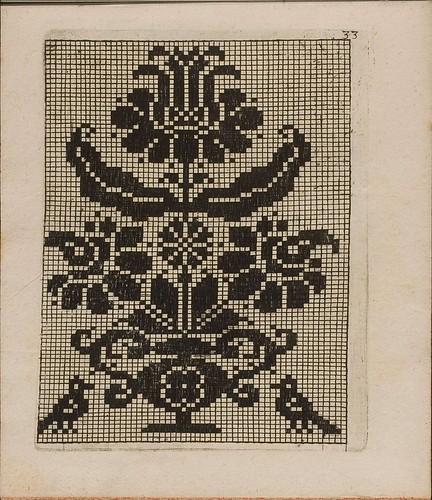
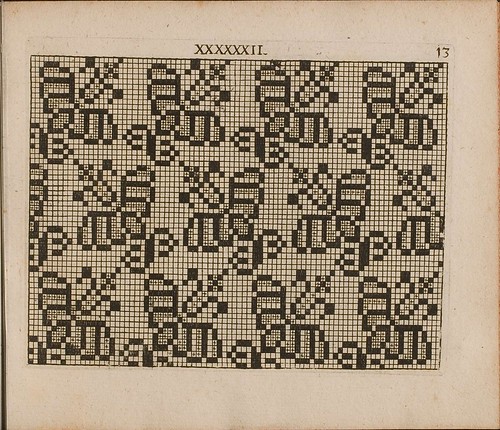
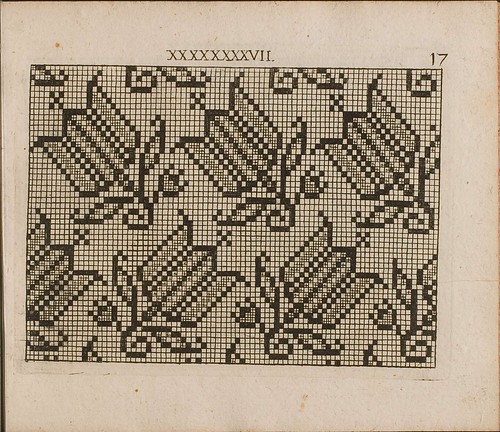

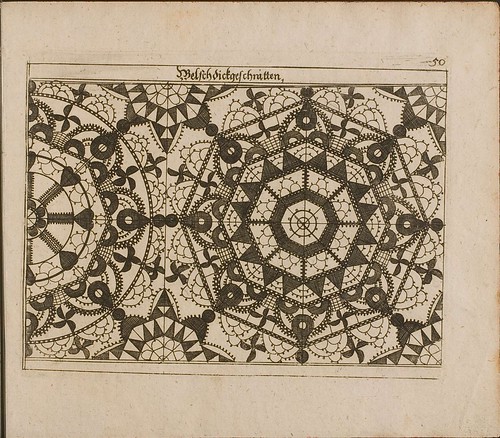

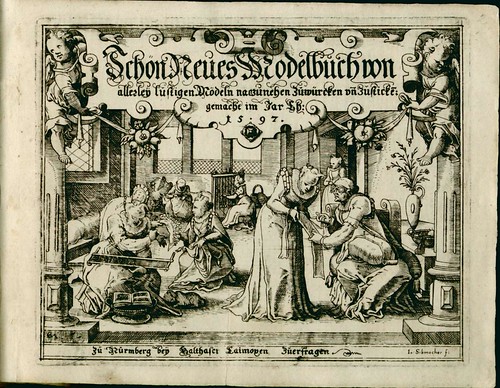
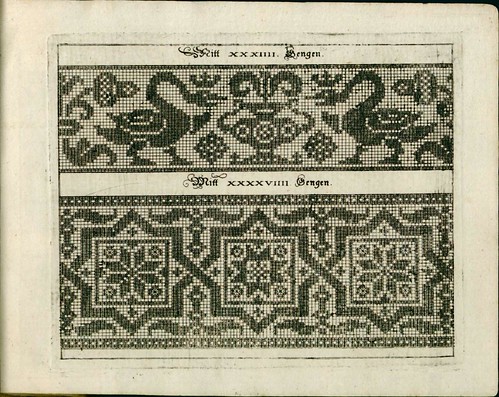
[Perugia towels with designs modelled on this pattern]
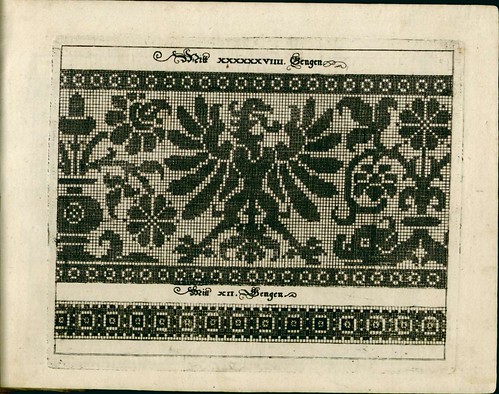
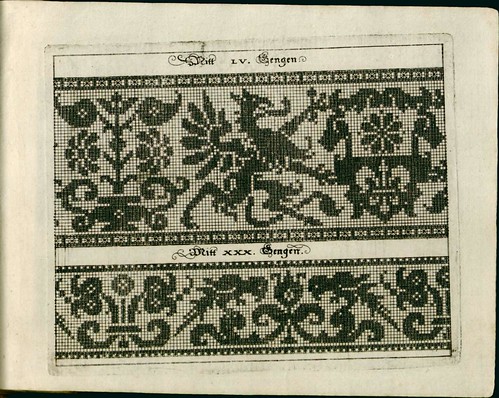
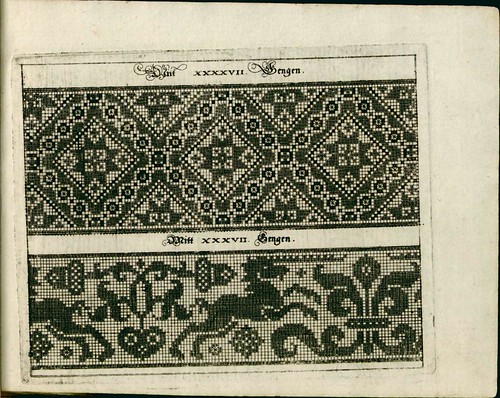

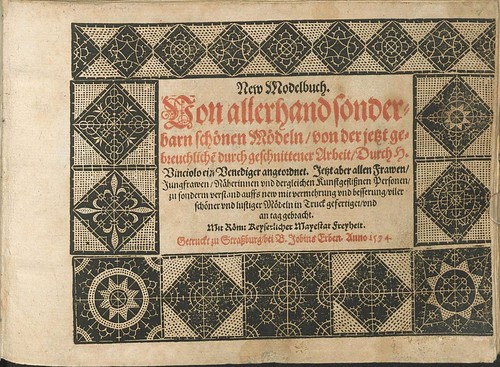
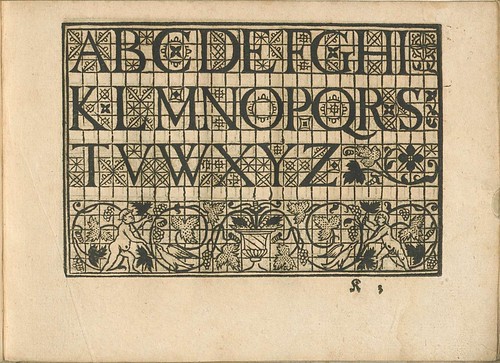
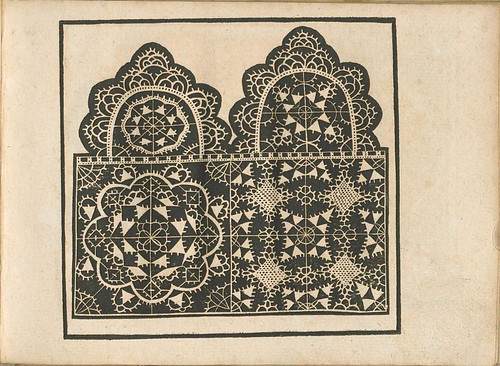
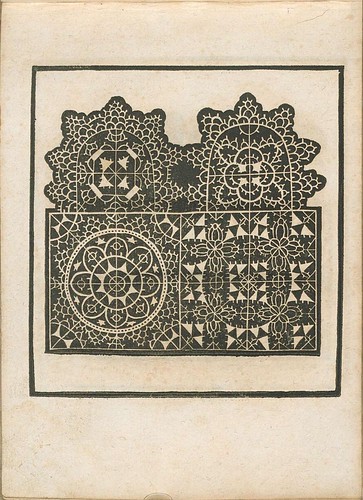
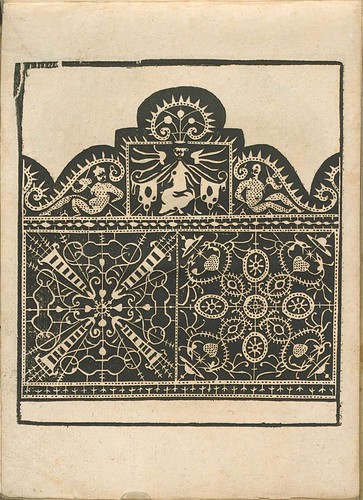
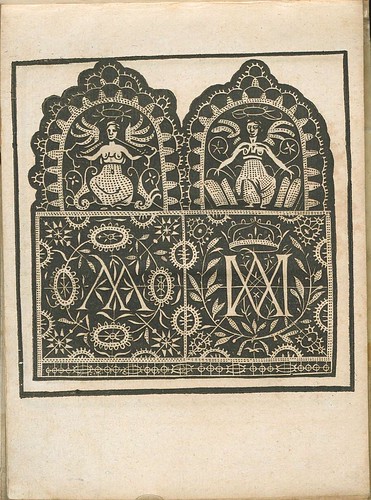
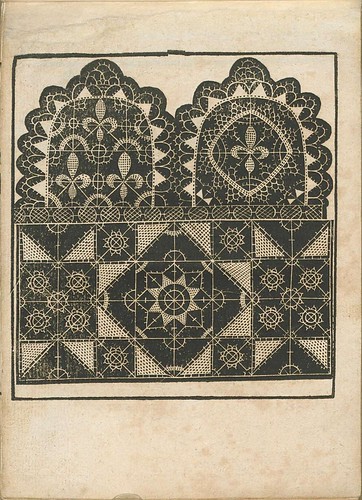
Oddly enough, searching for information using:
"modelbuchs, history and lacemaking for blokes who know absolutely zero about embroidery, needlework or lace and could not tell the difference between 'punto in aria' and 'reticella' if the welfare of all the children in Africa depended on it"yields less than satisfactory background reading material. Larger, unseen forces are at work of course. I should know by now that any attempt after midnight to wrestle a totally unfamiliar topic into a couple of digestible paragraphs that have a veneer of formality and authority is bound to fail.
I have managed to glean the following: lace-making has a complex history and even from cursory reading, it very quickly becomes a matter of semantics; various forms of the craft share a common heritage with other needle-based disciplines. If we just completely skip the pre-1500 era altogether we can make the generalisation that lace work (in the physical styles and forms we all know) became popular across Europe during the 16th century.
Evidently, the first pattern book (modelbuch) featuring designs that could be sewn (?tatted) to produce lace was published during the 1520s. As with all of this genre of craft books, some of the patterns could be versatile - perhaps for use in rug-making or embroidery - while others were conceived specifically with lace-making in mind.
Needless to say, there were a number of modelbuchs released to keep up with the burgeoning popularity and, as best I can tell, the majority of these were published in the second half of the 16th century and throughout the 17th century. As can be seen in the above examples, patterns were derived from nature (flowers and animals), variable geometric shapes (sometimes derived from classical design styles) and mythological figures, such as griffins, dragons and unicorns.
Rather than embarrassing myself further by making up more balderdash, here are the links to the three - newly or recently digitised - books above...
- 'Neues Modelbuch : Von Unterschiedlicher Art der Blumen', 1650 by Rosina Helena Fürst at HAB.
- 'Schön Neues Modelbuch', 1597 by Johann (Hans) Siebmacher (Sibmacher) at MDZ.
- 'New Modelbuch', 1594 by Federico di Vinciolo at MDZ.
All the images above were background cleaned, to one degree or another, of age-related staining. Click on any image and then "All sizes" for a larger version.
- ****Books About Weaving, Textiles, and Related Topics is definitely the single best resource for digitised books and covers a few centuries****.
- 'The Art of Modern Lace Making', 1891 by The Butterick Publishing Co. at Project Gutenberg.
- 'History of Lace', 1865 by Bury Palliser at Googlebooks.
- The quote at the beginning of this entry comes from 'The Needles Excellency', 1631 by John Taylor [full illustrated text - microfilm scan - pdf via Mathilde] (whole poem here too)
- History: one, two, three *shrug*.
- Partly via Marion McNealy.
- See previous related post: Lace Typography.
- UPDATE: Also see Corona delle Nobili et Virtuose Donne', 1592 by Cesare Vecellio at MDZ.
- UPDATE (2010): The Richard Rutt Collection of 19th century knitting manuals at the University of Southampton via @handmadelibrary



















11 comments :
Thank you for posting these links! Modelbooks are a fascinating study. The patterns in them were used for other crafts in addition to lace. The graphed ones for example were used for various forms of counted thread embroidery in addition to the darned net type lace styles. You can trace some patterns across geography (as the printers traveled or traded blocks, or the books were carried place to place) and through time (the designs show up again decades after publication, sometimes debased through repeated copy errors). I've used many for stitching, knitting and crochet. I used the dragon pattern for a filet crochet curtain: http://www.string-or-nothing.com/2004/10/18/DRAGONRESPLENDENT.aspx
For more on embroidery pattern books, you should check out Peter Stallybrass & Ann Rosalind Jones, _Renaissance Clothing and the Materials of Memory_ (Cambridge, 2000), especially chapter 6, "The needle and the pen: needlework and the appropriation of printed texts."
http://cooperhewitt.org/EXHIBITIONS/multiple_choice/
Unfortunately, the exhibition JUST closed!...
This might be one of my favs, yet! I love looking at antique craft patterns and embroidery. It inspires me! :D
Hello from mi blog "El HOMBRE ORQUESTA" i give you the Brilliant 2008 price.
tanks for you blog.
kamikazemusic.blogspot.com/
Those are great, and as Kim says, a lot of them can be used for a variety of types of needle crafts.
For those who might not know of it, the Lacis store in Berkeley, California has great resources for this sort of thing (http://www.lacis.com/retail.html). My quick web search for the URL indicates that they have even more stuff/resources than I remember, but they definitely sell books and patterns as well as supplies, antique fabric, generally cool stuff, and all that.
I'm not affiliated with them, just like to drop in and ogle the displays when I'm in the neighborhood.
I have done my own watercolour version of page 50, hope you like it and thanks for posting this, this is my fav blog and I have purchuased the book, it is amazing! :)
http://i248.photobucket.com/albums/gg164/formolrolando/azusept_petit.jpg
"As with all of this genre of craft books, some of the patterns could be versatile"
Time permitting, I would like to try adapting some of these designs as vector graphics. The graphed patterns are very similar to pixelated designs.
Enchanting! Loved the John Taylor poem/shout-out. Your blog is on my Top Five/Deserted Island list!
100 palavras...
nao descrevem
Thanks again, so much, for these visual treasures
Post a Comment
Comments are all moderated so don't waste your time spamming: they will never show up.
If you include ANY links that aren't pertinent to the blog post or discussion they will be deleted and a rash will break out in your underwear.
Also: please play the ball and not the person.
Note: only a member of this blog may post a comment.